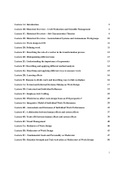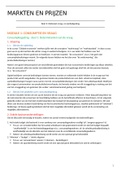Samenvatting
Shorter Summary Work Organization And Job Design all material needed for exam (EBB601B05)
Samenvatting Work Organization and Job Design van de videocolleges, omvat alle stof die nodig is voor het tentamen. Er zitten ook veel plaatjes uit de slides bij wat het overzichtelijker maakt. Deze samenvatting is 55 pagina's en dus kleiner dan de andere samenvattingen op stuvia, hoewel het wel al...
[Meer zien]





